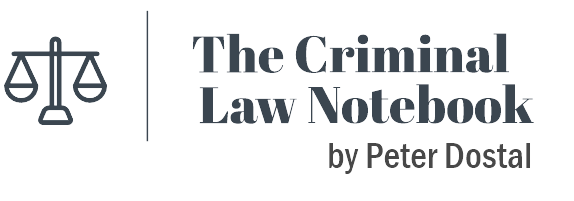Long-Term and Dangerous Offender Designation: Difference between revisions
No edit summary |
|||
| Line 7: | Line 7: | ||
A DO order is a "preventative sentence ... in its clearest and most extreme form".<ref> | A DO order is a "preventative sentence ... in its clearest and most extreme form".<ref> | ||
{{CanLIIRP|Boutilier|hpg4c|2017 SCC 64 (CanLII)|[2017] 2 SCR 936}}{{perSCC|Côté J}}{{atL|hpg4c|33}}<br> | {{CanLIIRP|Boutilier|hpg4c|2017 SCC 64 (CanLII)|[2017] 2 SCR 936}}{{perSCC|Côté J}}{{atL|hpg4c|33}}<br> | ||
{{CanLIIRP|Sipos|g7zmr|2014 SCC 47|[2014] 2 SCR 423}}{{perSCC|Cromwell J}}{{atL|g7zmr|19}}<br> | {{CanLIIRP|Sipos|g7zmr|2014 SCC 47 (CanLII)|[2014] 2 SCR 423}}{{perSCC|Cromwell J}}{{atL|g7zmr|19}}<br> | ||
</ref> | </ref> | ||
Revision as of 18:03, 1 February 2022
Introduction
Part XXIV of the Code, between s. 752 and 761, creates a regime to designate certain offenders as either "long-term offenders" (LTO) or "dangerous offenders" (DO). These offenders will be subject to either a long-term offender supervision order, in the case of an LTO, or an order of indeterminate detention, in the case of the DO.
A DO order is a "preventative sentence ... in its clearest and most extreme form".[1]
- Purpose
The Purpose of DO orders is not punitive and not rehabilitative. It is first and foremost for the purpose of segregating the offender from society.[2] It applies to those offenders where segregation is a "rational means" of achieving public safety.[3]
- ↑
R v Boutilier, 2017 SCC 64 (CanLII), [2017] 2 SCR 936, per Côté J, at para 33
R v Sipos, 2014 SCC 47 (CanLII), [2014] 2 SCR 423, per Cromwell J, at para 19
- ↑ Boutilier, supra, at para hpg4c
- ↑ Boutilier, supra, at para hpg4c
History
The provisions of the Criminal Code regarding indefinite detention arose from the 1938 Archambault Report that recommended implementing a regime that separated dangerous offenders from society. In 1947 the first amendments were made creating an indefinite detention order for "habitual criminals".[1]
The first amendment to the Criminal Code introducing the dangerous offender regime was in 1977.[2] It was later amended in 1997 and the in 2008 with the Tackling Violent Crime Act (SC 2008, c. 6).[3]
- ↑ R v Ipeelee, 2012 SCC 13 (CanLII), [2012] 1 SCR 433, per LeBel J, at paras 40 to 45
- ↑
R v Boutilier, 2016 BCCA 235 (CanLII), 336 CCC (3d) 293, per D Smith JA, at para 24
- ↑
Boutilier, ibid., at para 23
see List of Criminal Code Amendments
Topics
- Remand Assessment for LTO/DO Applications
- Requirements for a Long Term Offender Designation
- Consequences of a Long Term Offender Designation
- Requirements for a Dangerous Offender Designation
- Consequences of a Dangerous Offender Designation
- Procedure in a LTO/DO Designation Hearing
- Appellate Review of an LTO or DO Designation
